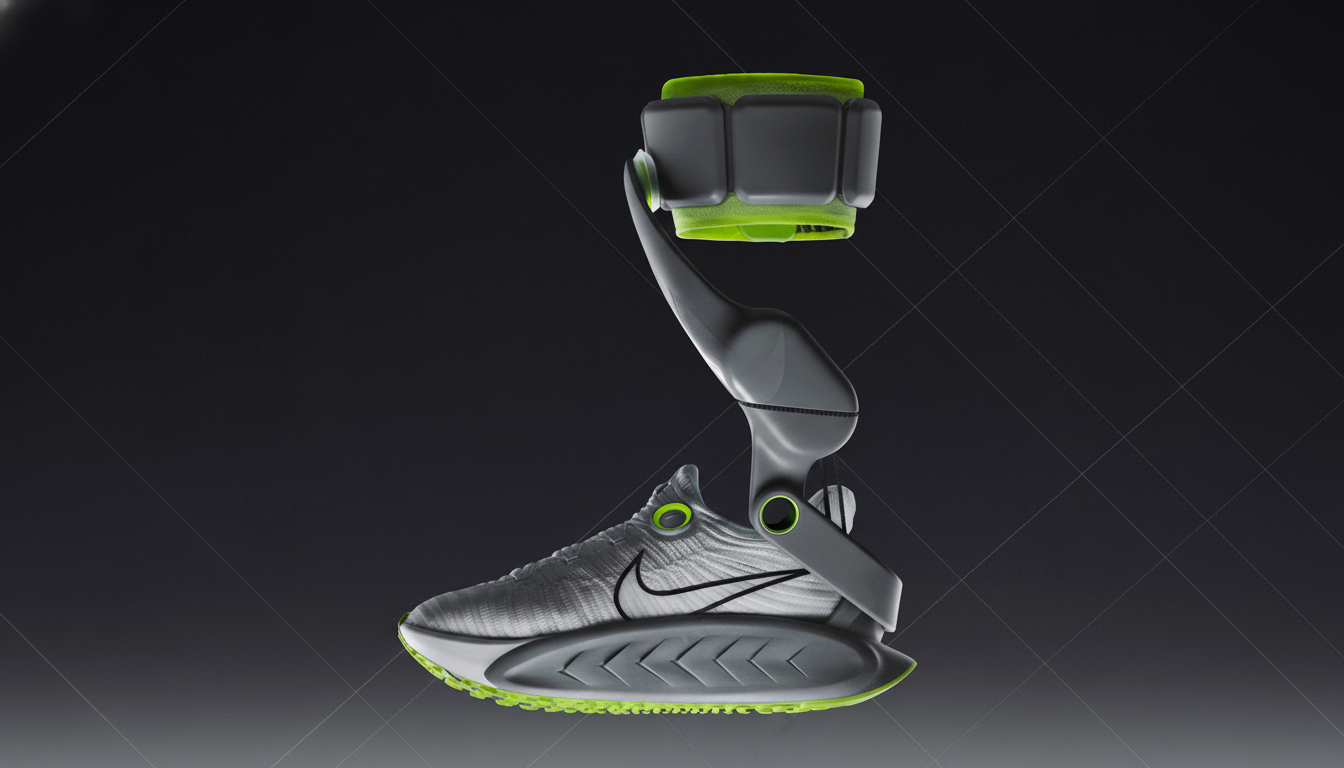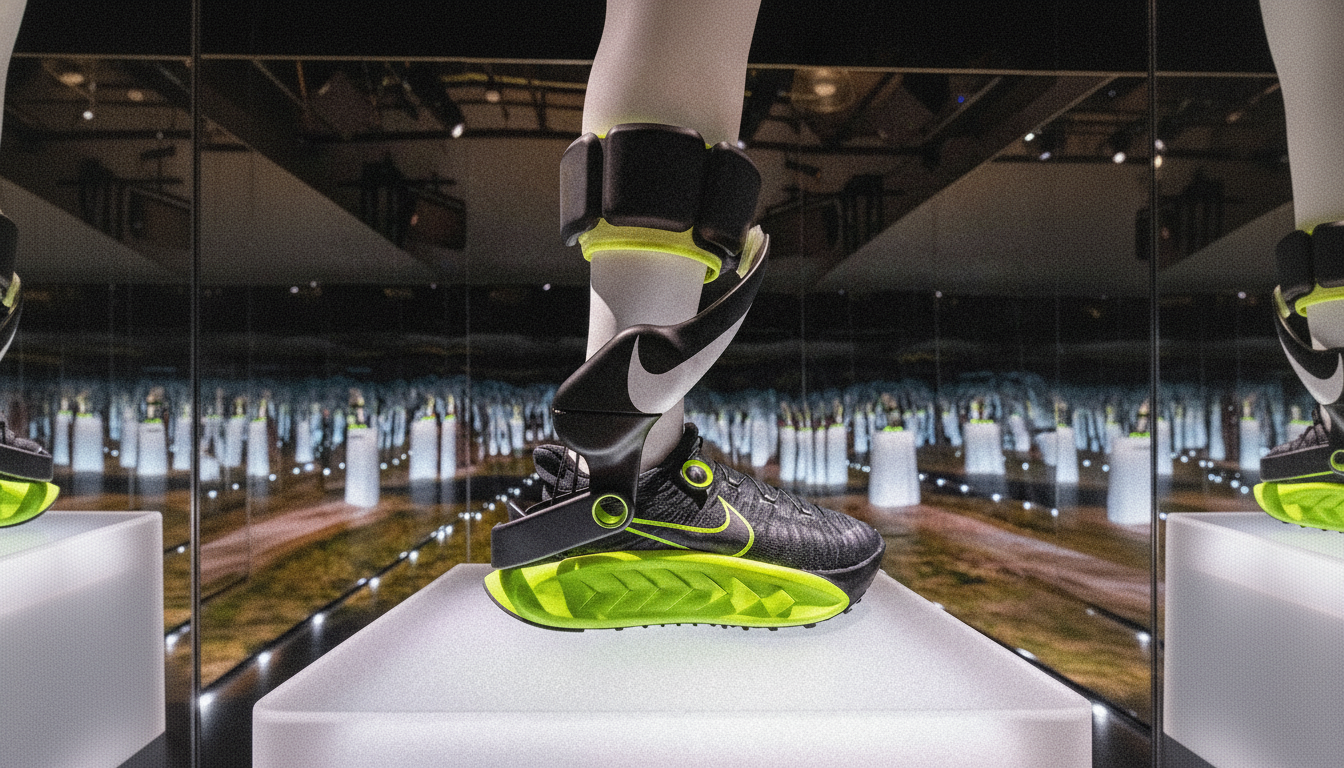Nike has taken the lid off of Project Amplify, a robot-powered shoe system that it hopes will help ordinary humans walk and run farther with less effort. The idea marries a carbon fiber-plated running shoe with a lightweight motor, drive belt and rechargeable cuff battery, which synchronizes support to your stride so that movement feels easier and longer-lasting.
The company says the system is like a “second set of calf muscles” and uses motion algorithms from the Nike Sports Research Lab to time the boost in propulsion through the ankle and lower leg. And crucially, the shoe can be worn on its own with the robotic module coming into place when you need powered assistance. According to Nike, testers who have used the system can maintain about a 10- to 12-minute-per-mile running pace — squarely targeting casual runners and walkers, not elite racers.

How the robot-assisted Project Amplify system works
At its core, Project Amplify’s idea is a simple one: deliver extra assistance at the very moment you push off from the ground — when the calf and ankle muscles are most taxed. The motor and belt provide highly controlled torque during those moments, the software cycling power to keep everything in line without making things feel artificial. Think of it as an e-bike for your feet; human-forward, providing a silent assist that helps you maintain form and pace longer.
Nike developed the hardware with Dephy, a robotics company best known for its lower-limb exoskeletons. By taking some of the load off during plantarflexion (the motion which pushes you forward), it’s designed to help mitigate fatigue accumulating through a walk, jog or easy run.
What Science Says on Supportive Footwear
The peer-reviewed research indicates that there is real potential here. Engineers at Stanford University published work demonstrating that custom-designed ankle exoskeletons may help the average person during walking to reduce energy consumption by approximately 17%. The Harvard Wyss Institute has claimed energy reduction of 10%–20% on soft exosuits in some situations. While lab setups for these kinds of tests can be quite different from consumer-ready products, the universal takeaway is that proper ankle support at the right time can make a big difference in effort.
Translating those gains into a mass-market shoe-plus-robot package will be driven by how comfortable the shoes are, the responsiveness of the device and how smoothly it can adjust to different gaits. If Nike’s control algorithms can keep the assistance synchronized and unobtrusive, it could mean covering longer distances at the same perceived effort level — and more consistent training — for beginners, older athletes or anyone coming back from a break.

Testing progress and development partners behind Amplify
Nike says that Project Amplify has been used by over 400 athletes during several years of prototyping. Dephy’s wearable robotics know-how serves as the hardware foundation; the Nike Sports Research Lab is in charge of movement modeling and tuning. There’s no word on timing for a release, but the design is very much modular: The shoe functions by itself as a conventional trainer, with the powered module providing assistance only on robot-assist days.
Questions still to answer about durability and safety
Key details remain under wraps. Battery life and charge time will work out what range really means; weight distribution will define comfort and perceived agility; and durability in rain, dust and cold will matter for real-world use. Maintenance and serviceability will also be key—consumers will need to be given a clear indication as to the state of belt wear, replacement parts and software updates.
There are fears about regulations and safety, too. Standards groups like ASTM International’s F48 committee on exoskeletons and exosuits has issued guidance on testing and labeling. Footwear that actively applies torque will come under scrutiny from sport regulators — World Athletics already prohibits mechanically powered assistance in competition — but Nike is framing Amplify as a shoe for daily movement, not racing. Adoption will also be determined by price — and long-term support; the company’s earlier self-lacing Adapt BB line illustrated how continuous app and ecosystem support factors into buyers’ confidence.
A new day of assisted movement for everyday athletes
In recent years, innovations such as carbon plates and high-tech foams have been about giving back more of the energy you put in; Project Amplify takes a different approach by adding energy from outside your body’s system. If Nike can bring a system to market that feels intuitive, performs reliably and can also be made affordable, it would create a mainstream category of powered footwear — altering who feels comfortable slipping on shoes and where they can take them on any given day.
Nike also shared some other performance concepts alongside Amplify, but the robot-assisted shoe is the headline act: a bold bet that many of us would move more if it were just a little bit easier. The e-bike revolution hints that they may be onto something.

